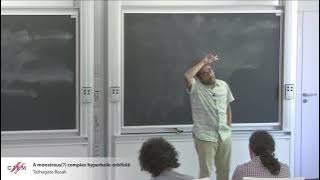Indefinite orthogonal group
In mathematics, the indefinite orthogonal group, O(p, q) is the Lie group of all linear transformations of an n-dimensional real vector space that leave invariant a nondegenerate, symmetric bilinear form of signature (p, q), where n = p + q. It is also called the pseudo-orthogonal group or generalized orthogonal group. The dimension of the group is n(n − 1)/2. The indefinite special orthogonal group, SO(p, q) is the subgroup of O(p, q) consisting of all elements with determinant 1. Unlike in the definite case, SO(p, q) is not connected – it has 2 components – and there are two additional finite index subgroups, namely the connected SO+(p, q) and O+(p, q), which has 2 components – see for definition and discussion. The signature of the form determines the group up to isomorphism; interchanging p with q amounts to replacing the metric by its negative, and so gives the same group. If either p or q equals zero, then the group is isomorphic to the ordinary orthogonal group O(n). We assume in what follows that both p and q are positive. The group O(p, q) is defined for vector spaces over the reals. For complex spaces, all groups O(p, q; C) are isomorphic to the usual orthogonal group O(p + q; C), since the transform changes the signature of a form. This should not be confused with the indefinite unitary group U(p, q) which preserves a sesquilinear form of signature (p, q). In even dimension n = 2p, O(p, p) is known as the . (Wikipedia).



















